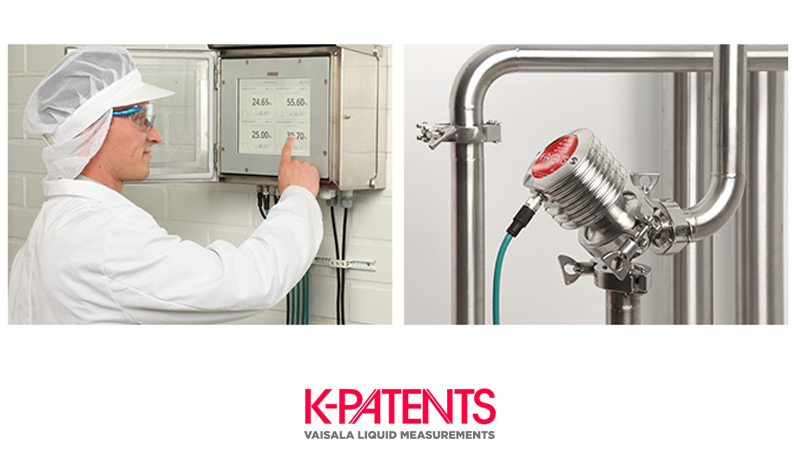Q&A from Our Webinar: The Benefits of Refractive Index (RI) in Development and Production of Active Pharmaceutical Ingredients (APIs)
In this blog, we answer questions we received during our recent webinar about The Benefits of Refractive Index (RI) in Development and Production of Active Pharmaceutical Ingredients (APIs).
The webinar recording is available here.
A blog about the topic is available here.
Explore all refractometer applications for pharmaceutical drug manufacturing and biotechnology processing.
You mentioned USP Class VI. It is important to indicate also the temperature at which this is valid, for example 121°C.
The modified PTFE used as the prism gasket material has been tested accordingly with the USP Class protocol for plastics at 70°C. In case a higher temperature is required, please specify this in the beginning of the project where the suitable product for the application is selected.
Do you have any slides that show how sensitive the refractive index is to temperature (lab data)?
Typically, one centigrade in Celsius corresponds to ± 0,1% in concentration, but it is good to take into consideration that it depends on the chemical or substance measured. Each refractive index value will be calibrated to match the chemical curve for that particular measurement and application.
Is the refractometer certified for use in hazardous areas?
We also supply Intrinsically Safe Process Refractometers that can be used in hazardous locations in Zone 0, Zone 1 and Zone 2. The refractometer is available with ATEX and IECEx certifications.
In the cake wash example, the picture included a probe type being used in a very small tube apparatus. Was this because the end user wanted to scale up this probe refractometer for eventual production scale?
We have a compact, scalable pharma product model, which we presented, but in this particular case the customer chose to use a probe refractometer already at the lab, which is the same model they are using at different points in their pilot and full scale plants.
Can you comment on the accuracy of the RI measurements? If one were to quote the accuracy capability of the instrument?
The accuracy in terms of refractive index nD is ± 0,0002.
We perform a cooling crystallization step during API manufacturing. I am interested in detecting when the crystals start to form. Can I see the crystals with refractive index measurements?
The refractive index measurement is not influenced by suspended crystals in the slurry; therefore, we cannot “see” the crystals. However, you are probably interested in determining the point at which the crystals start to form, and that is possible by refractive index measurements. If you monitor the concentration of the mother liquor by a refractometer, you will be able to see how the concentration increases during cooling until a saturation or supersaturation point, after which the concentration starts to decrease. The concentration starts to decrease because the compound in the liquid or solvent starts to crystallize, and the mass transfer from the liquid to the solid means crystal formation. That is the point that you want to determine and monitor.
Can refractive index detect turbidity?
No, as turbidity is caused by suspended solids and refractive index is influenced only by the dissolved material of the solution.
How can I perform re-calibration of the refractometer?
The K-Patents refractometer presents no measurement drift. This means the refractometer is shipped to your factory calibrated for refractive index and will not require re-calibration. However, GMP guidelines require you do perform verification in a period defined by your company’s practice. K-Patents calibrates each refractometer using Cargille’s standard refractive index liquids over the full range. Therefore, the K‑Patents refractometer calibration can easily be verified on site using the N.I.S.T. traceable refractive index liquids. Instructions for the verification steps are given on the refractometer’s display. A report of the verification results can be printed and signed.
I have a distillation process for a chloroform-ethyl acetate mixture. Can I monitor in real-time the concentration of chloroform? We need this to stop the operation.
The boiling point for chloroform seems to be lower (61°C) than ethyl acetate (77°C), so chloroform should be your top product. You can certainly measure the concentration in real time with a refractometer, but in this case, it must be after the condenser. We would need to check refractive index range and temperature and other process details, but this should not be a problem, and this seems like a good application for the refractometer and a good opportunity to optimize your process. You can request to be contacted by us, and we can send you a form to fill with the required details for evaluation of your application.
Do you have any experience of the use of RI in high pressure systems, if so, what is the highest pressure tolerances the probes can take?
Based on our technical specification, we can supply the instrument to pressures up to 40 bar process pressure.
Joining forces – Vaisala and K-Patents
Want to learn more or to find out how K-PATENTS® Process Refractometers could help your process, please contact us.


Add new comment